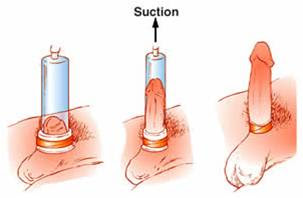What is it?
Erectile
dysfunction (ED) is the inability to achieve or sustain an erection suitable
for sexual intercourse. Although less commonly used by health care providers,
ED is also known as impotence. There are three instances where ED is present in
a man. The first is when a man can get an erection sometimes, but not every
time. Other instances are when a man can get an erection, but it does not last
long enough for sexual intercourse. Lastly, ED is present when a man is unable
to get an erection at any time.
About 30 million men in America are
affected by this condition. In fact, about half of the cases of ED are only
issues of concern from time to time. Occasional ED is often brought about by
stress and is not uncommon. However, frequent ED may be an indication of other
health problems that may need to be addressed. Furthermore, male sexual
problems may be a result of premature ejaculation, delayed or absent
ejaculation, lack of interest in sex, or emotional or relationship difficulties
that may need to be addressed by a professional.
The prevalence of this condition
increases with age. According to the National Institute of Diabetes and Digestive
and Kidney Diseases (NIDDK), ED affects four percent of men in their fifties,
seventeen percent of men in their sixties, and almost half of men over the age
of seventy five. Nevertheless, aging does not cause ED, it just increases the
chance of getting it. It is important to note that the younger patients with
this condition used illicit drugs and smoked cigarettes substantially more than
the older patients did. Therefore, in general, the health status of the
individual plays a major role in his sexual function. Lifestyle choices, such
as drinking, smoking, using illicit drugs, being overweight and lack of
physical activity can result in ED. Overall, the healthier the patient is, the
greater chances there are of improved sexual function.
Several physical, psychological and
emotional issues cause ED. Physical issues are caused by damage to nerves,
arteries, fibrous tissues and smooth muscles. The following may be the cause of
the damage, which can inevitably lead to ED: high blood pressure, diabetes,
atherosclerosis, kidney disease, multiple sclerosis, prostate cancer and injury
to the penis, spinal cord, prostate, bladder or pelvis. Furthermore,
psychological issues, such as anxiety, depression, low self-esteem and guilt,
are among a few of the many emotional issues that contribute to ED. In addition
to these underlying causes, medications to treat several of those conditions
can also lead to ED. Blood pressure medication, antihistamines, antidepressants
and appetite suppressants often have ED as a side effect.
Erectile dysfunction is a common
condition, and although not the most pleasant there are ways to go about
handling this problem. Follow up with the next article to see how.
References:
References:
"Erectile Dysfunction | NIDDK." National Institutes of Health. U.S. Department of Health and Human Services, n.d. Web. 16 Mar. 2017. <https://www.niddk.nih.gov/health-information/urologic-diseases/erectile-dysfunction>.
"Erectile Dysfunction: Symptoms, Causes, and More." Healthline. N.p., n.d. Web. 16 Mar. 2017. <http://www.healthline.com/health/erectile-dysfunction>.
"6 Things You Really Should Ask About ED." WebMD. WebMD, n.d. Web. 16 Mar. 2017. <http://www.webmd.com/erectile-dysfunction/guide/erectile-dysfunction-basics#2>.
Admin. Erectile Dysfunction Protocol. N.p., n.d. Web. 18 Mar. 2017. <http://erectiledysfunctionprotocolreviews.com/erectile-dysfunction-a-synopsis-of-it-causes/>.
Admin. Erectile Dysfunction Protocol. N.p., n.d. Web. 18 Mar. 2017. <http://erectiledysfunctionprotocolreviews.com/erectile-dysfunction-a-synopsis-of-it-causes/>.


Comments
Post a Comment